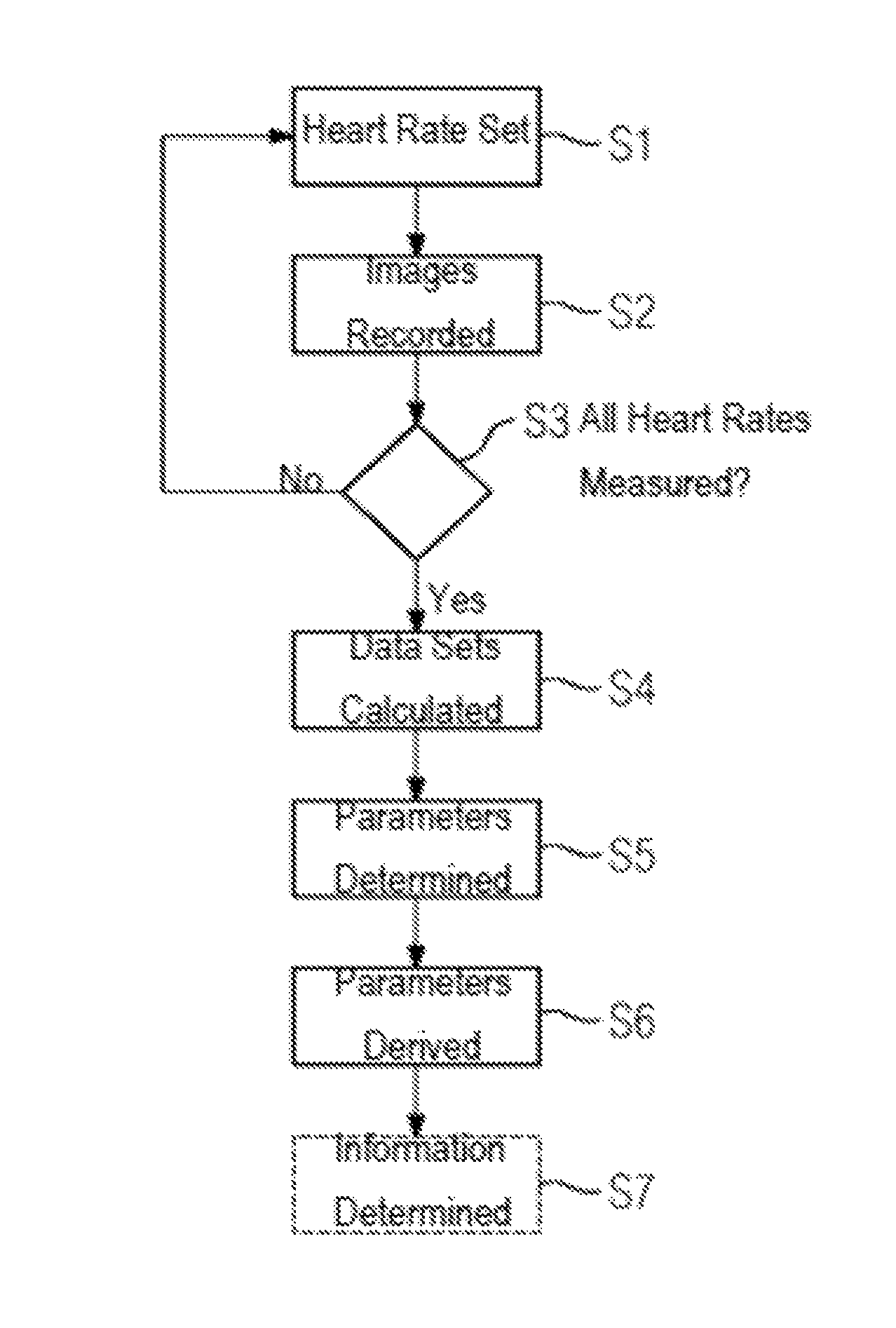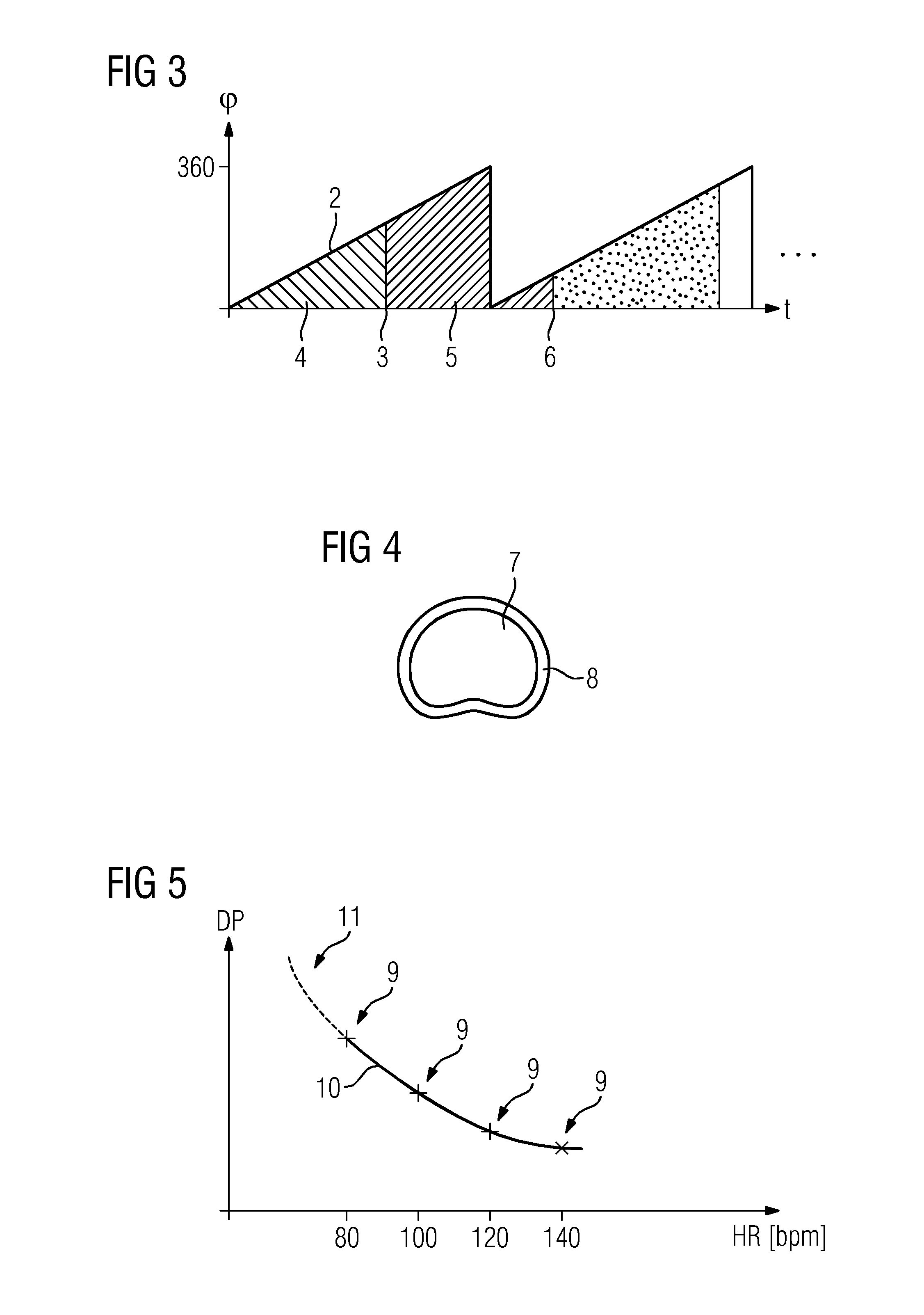Determination of physiological cardiac parameters as a function of the heart rate
a physiological cardiac parameter and heart rate technology, applied in the field of physiological cardiac parameters as a function of heart rate, to achieve the effect of improving the reconstruction of three-dimensional image data sets, noise effects and other artifacts in image data sets
- Summary
- Abstract
- Description
- Claims
- Application Information
AI Technical Summary
Benefits of technology
Problems solved by technology
Method used
Image
Examples
Embodiment Construction
[0039]FIG. 1 shows a flow diagram of an exemplary embodiment of a method, where cardiac stimulation to adjust heart rates is also shown. Before the method is begun, a patient is positioned in an X-ray device (e.g., in an X-ray device having a C-arm, on which an X-ray emitter and an X-ray detector are arranged facing each other). Before projection images are recorded, in act S1, a first heart rate is set. The first heart rate is higher than a usual resting heart rate. In one embodiment, 80 bpm is selected as the first heart rate. The adjustment of the heart rate in the patient may be achieved, for example, by cardiac stimulation using a pacing catheter that is located in the heart, or using a cardiac pacemaker.
[0040]If the heart rate in act S1 is set at a stable rate, then in act S2, projection images for the patient are recorded from different projection directions, and such that the recording of the projection images is synchronized with the cardiac cycle. In practical terms, this ...
PUM
 Login to View More
Login to View More Abstract
Description
Claims
Application Information
 Login to View More
Login to View More - R&D
- Intellectual Property
- Life Sciences
- Materials
- Tech Scout
- Unparalleled Data Quality
- Higher Quality Content
- 60% Fewer Hallucinations
Browse by: Latest US Patents, China's latest patents, Technical Efficacy Thesaurus, Application Domain, Technology Topic, Popular Technical Reports.
© 2025 PatSnap. All rights reserved.Legal|Privacy policy|Modern Slavery Act Transparency Statement|Sitemap|About US| Contact US: help@patsnap.com



